Physical Address
304 North Cardinal St.
Dorchester Center, MA 02124
Physical Address
304 North Cardinal St.
Dorchester Center, MA 02124
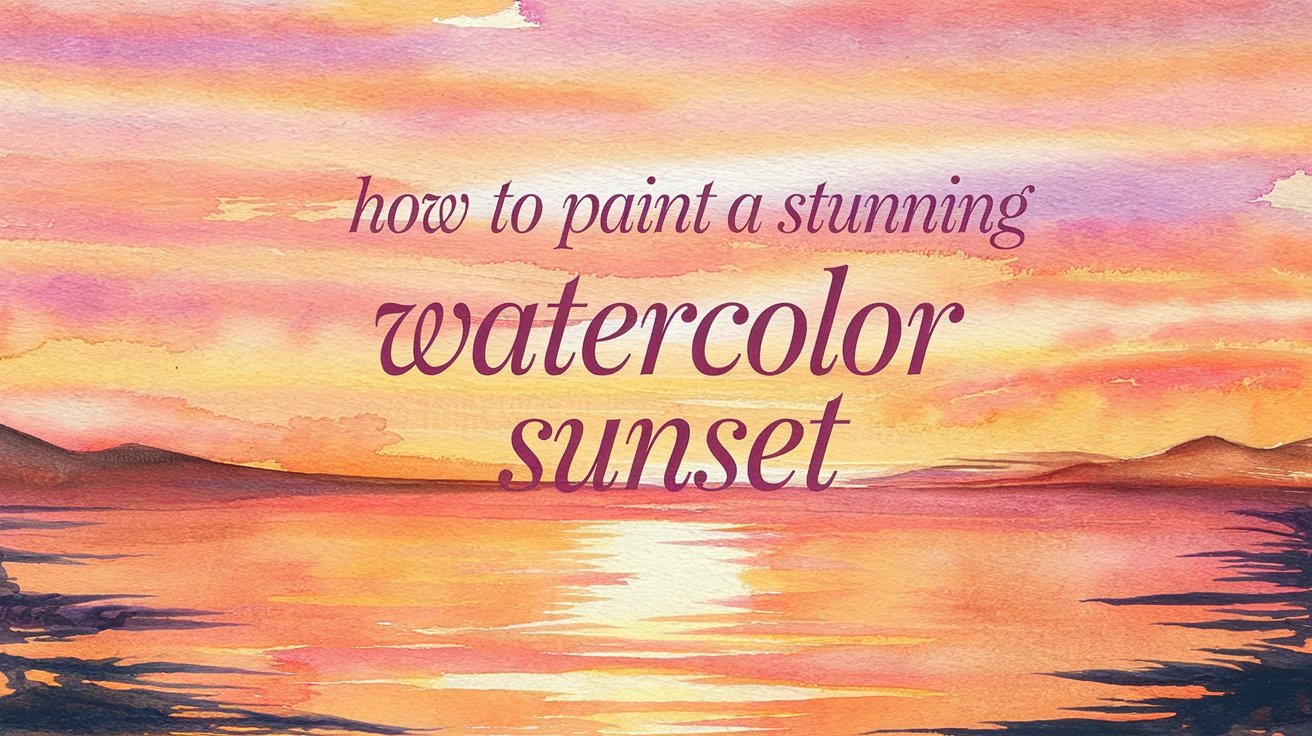
Immerse yourself in the secrets of creating dreamy watercolor sunsets using simple techniques that transform ordinary paper into magical skies.
Painting a watercolor sunset is simpler than it may appear. With the right materials and techniques, you can create a beautiful scene that showcases nature’s colors. Start with high-quality paper and select a mix of warm and cool colors. Focus on mastering the wash technique and learn how to blend colors effectively. These skills will help you bring the vibrant skies to life on your canvas. Follow these essential steps to turn your blank canvas into a stunning sunset painting. Enjoy the process and let your creativity shine!
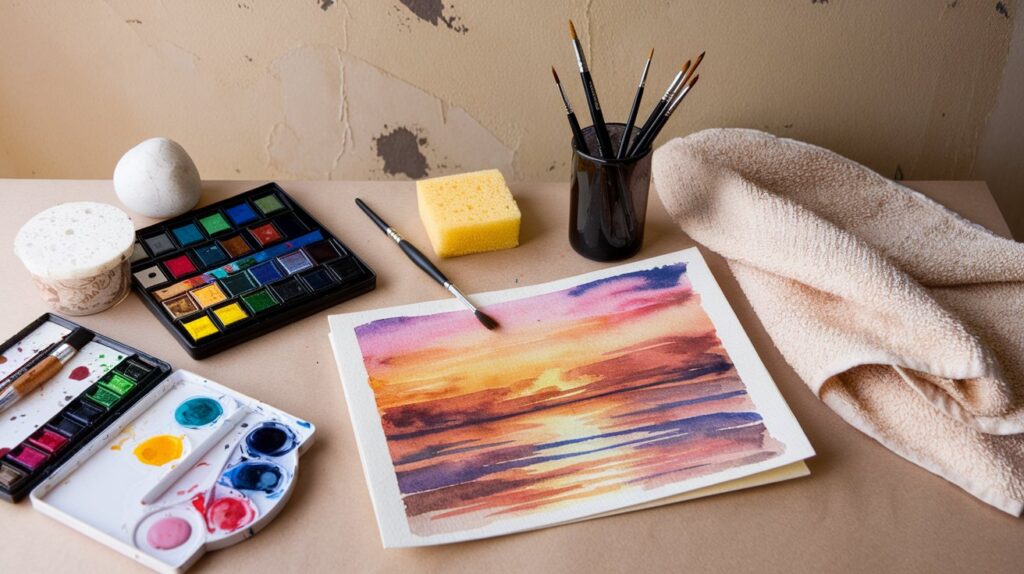
To create a beautiful watercolor sunset, you need five essential tools.
Use Saunders Waterford 140lb Cold Press Paper for its perfect texture.
Choose Quinacridone Gold and Ultramarine Blue for your paint.
For brushes, select a large mop brush for wide strokes, a Size 8 Raphael SoftAqua for details, and a number 6 Bamboo brush for clouds.
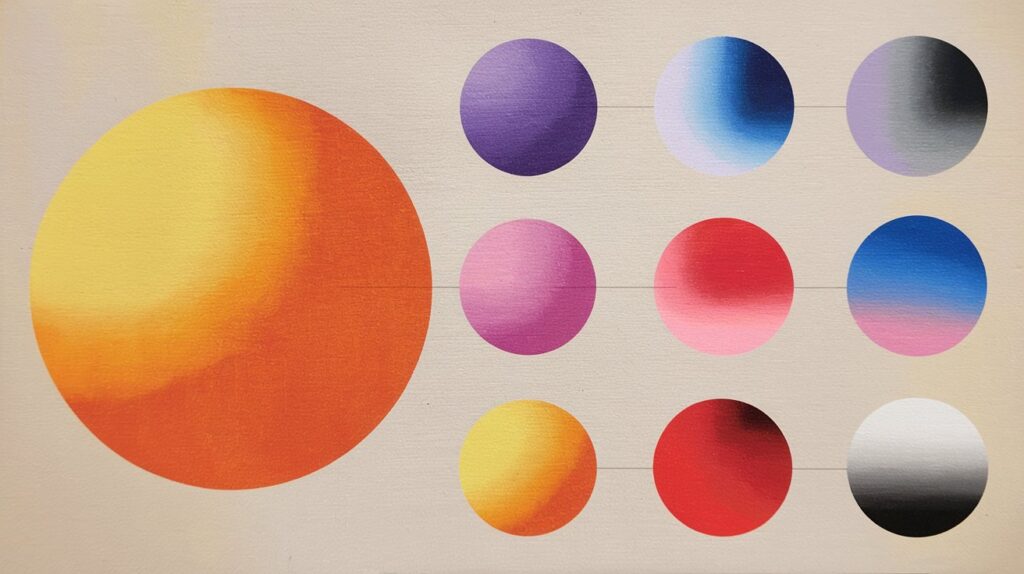
Now that you have your materials, let’s explore how color theory enhances your sunset painting.
Successful color blending relies on understanding warm and cool color relationships. Place reds, oranges, and yellows next to blues and purples to create depth and emotion.
Use analogous colors for smooth transitions. Add white to create bright highlights in clouds.
This method will help you achieve a vibrant and balanced sunset.
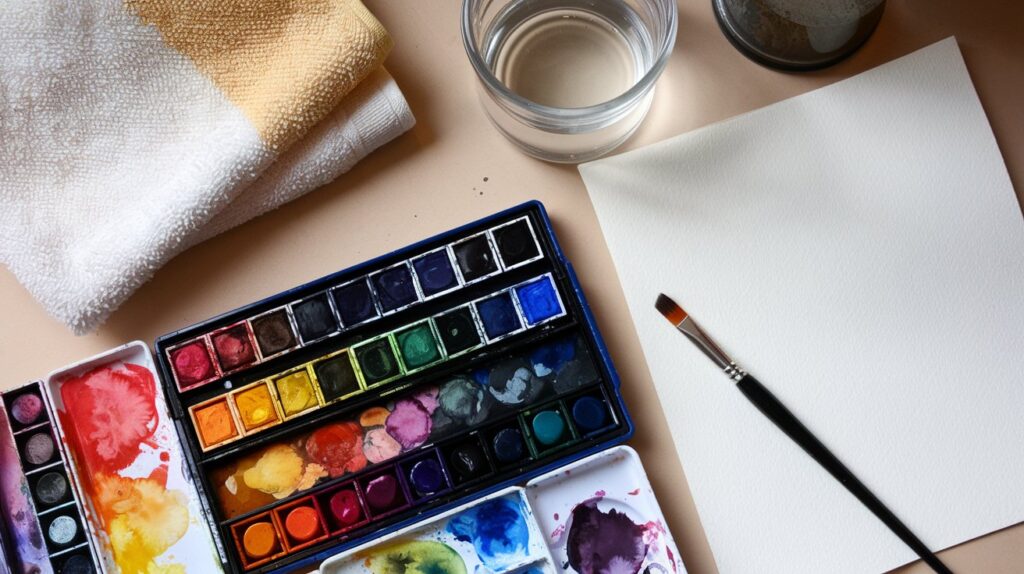
A well-organized workspace is essential for creating your watercolor sunset. First, find a clean, flat surface with good lighting to see colors clearly.
Next, gather all your materials. Arrange your paints by color on your palette. Protect your workspace with a covering. Keep paper towels nearby for easy cleanup.
This setup will help you focus on your painting and enjoy the process.
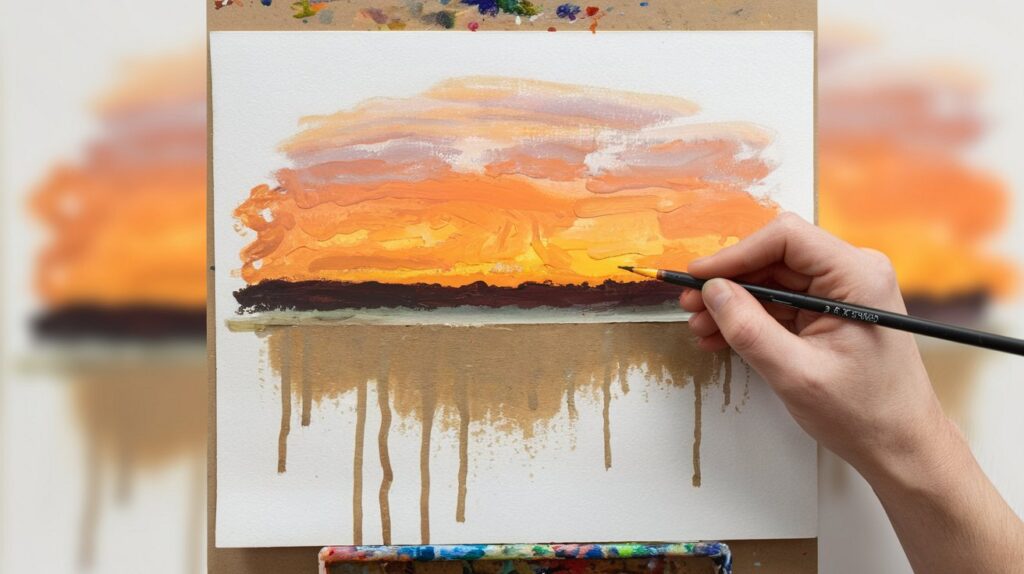
The horizon line is crucial for your sunset painting. Start by drawing a light horizontal line on your paper. Place this line about one-third to halfway down for good balance.
Next, wet both sections of your paper with clean water. Keep your sketching simple; focus on the horizon line and leave space for mountains or trees to blend in later.
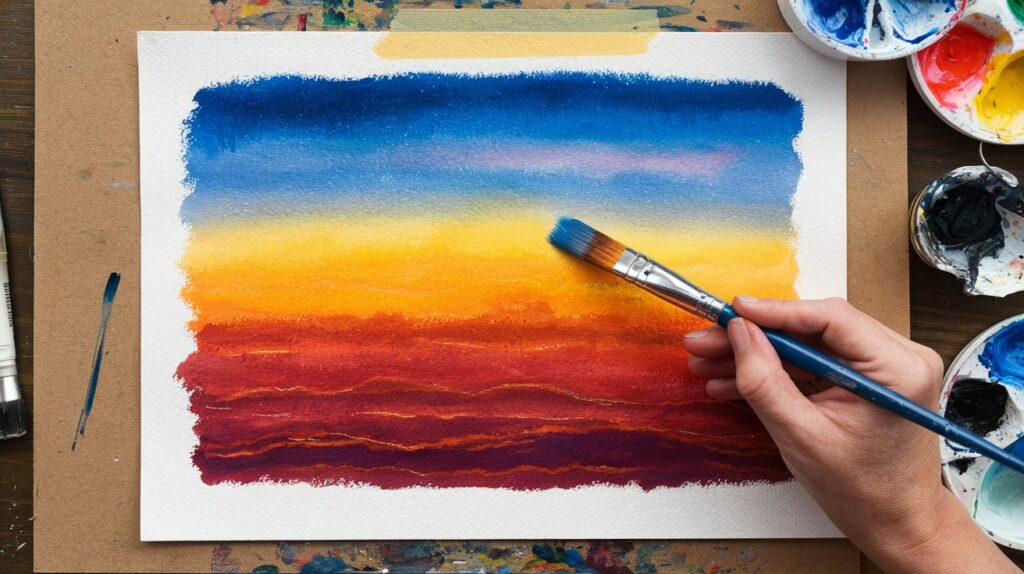
With your horizon line set, it’s time to add color to your sunset sky. Use a 1″ flat brush to paint broad stripes. Start with vivid reds near the horizon.
Next, add Cadmium Yellow and Ultramarine Blue as you move up. Keep complementary colors apart to prevent muddiness.
For smooth gradients, lightly mist your paper and tilt it to blend the colors seamlessly.

Successful watercolor blending requires good timing and moisture control.
Start by misting your paper with a spray bottle. Position your paper at an angle. Use gentle brush strokes to apply wet paint to the damp paper. Allow the colors to merge naturally.
Avoid overworking the paint. Instead, use a flat brush to smooth the edges while keeping complementary colors separate. This will help you avoid muddiness in your work.
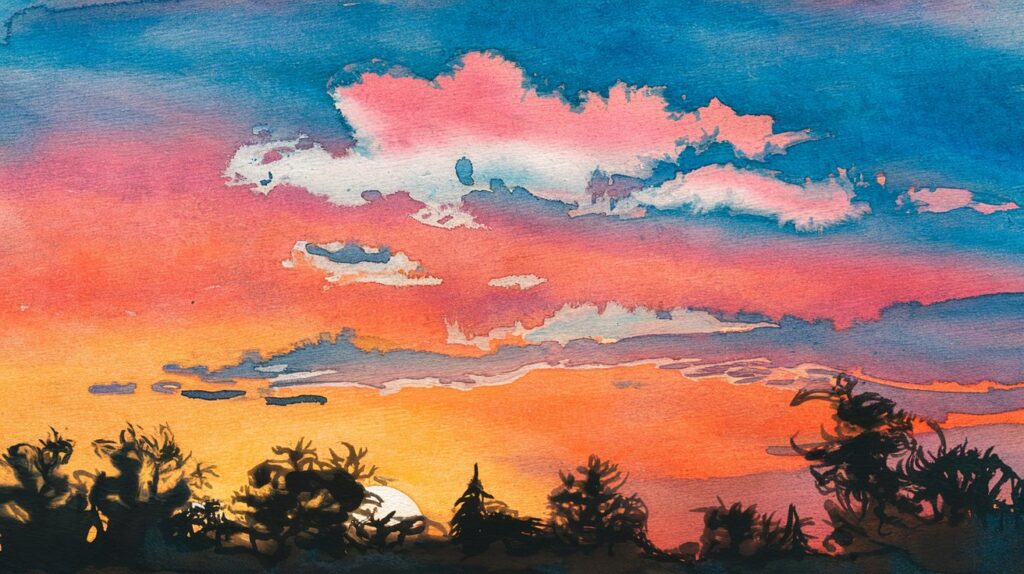
To create realistic cloud formations in your watercolor sunset scene, follow these steps:
This technique enhances the viewpoint of your painting.
For cloud colors, mix Paynes Gray, Ultramarine, and Alizarin Crimson. Apply this mix when the paper has a slight shine.
Keep your brush strokes minimal and natural to achieve an organic look.
Adding foreground elements to your sunset painting can enhance your scene.
Position silhouettes of trees or birds near the bottom of your canvas. Use contrasting colors like Payne’s Gray to add depth.
Apply dry brushing techniques for textured foliage.
To achieve perfect color balance in a watercolor sunset, create a gradient that transitions from warm to cool colors.
Start with yellows and oranges at the horizon, then blend into blues and purples as you move upward.
When mixing colors, keep complementary hues apart to keep them vibrant.
Adjust your pigment concentration by changing the water ratios.
Use a spray bottle to blend colors smoothly as you layer them.
This method will help you create a stunning sunset effect.
After you create your base color gradient, refine your sunset painting to make it a true work of art.
Use a small brush to add details along the edges of clouds and land features. Layer additional colors for depth, and let each wash dry completely.
Adjust colors by lifting excess pigment with a clean, wet brush where needed. Add darker tones near the horizon to enhance the viewpoint.
You have learned the key steps to paint a beautiful watercolor sunset. Keep trying different colors and techniques to find your own style. Practice regularly. Each sunset you paint will improve your understanding of how colors mix and blend. With these basic skills, you can capture the beauty of nature on paper. Enjoy the process and let your creativity shine!